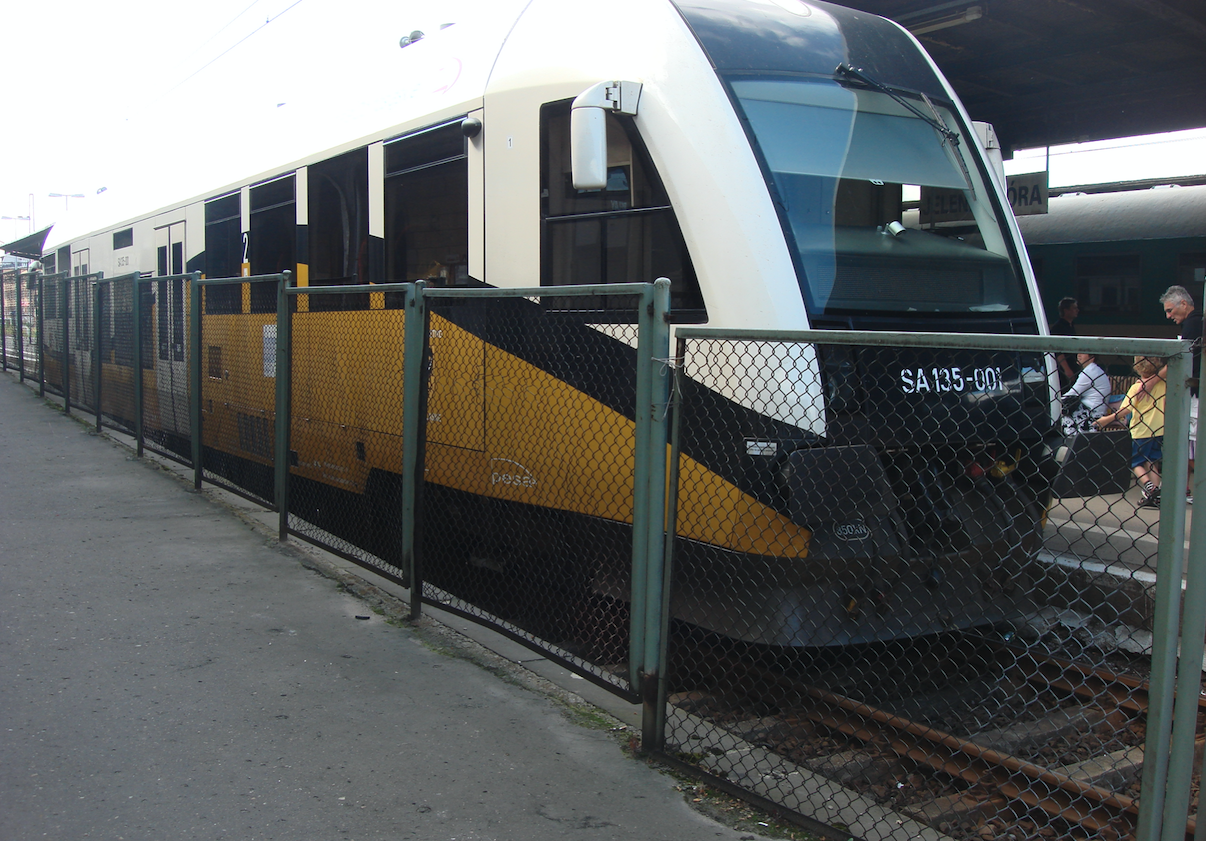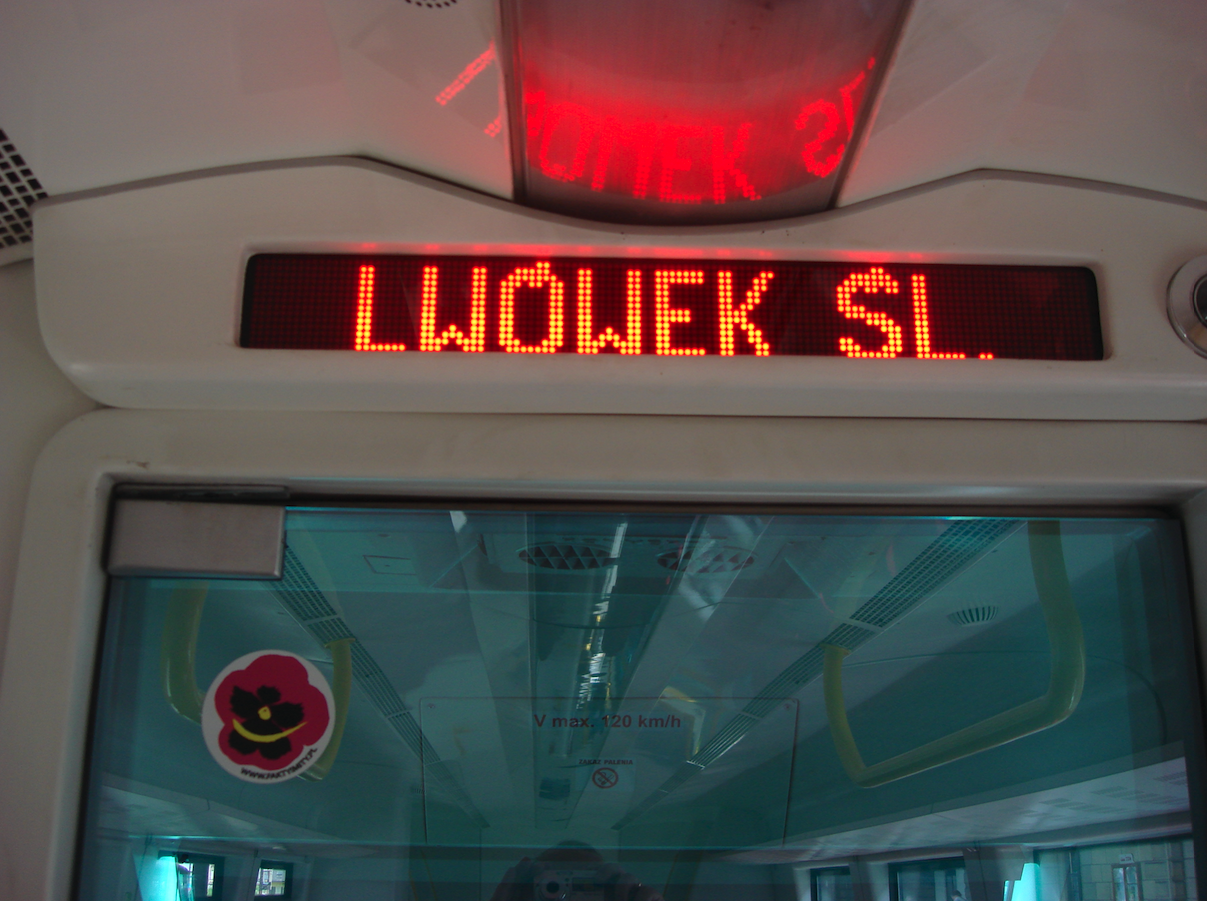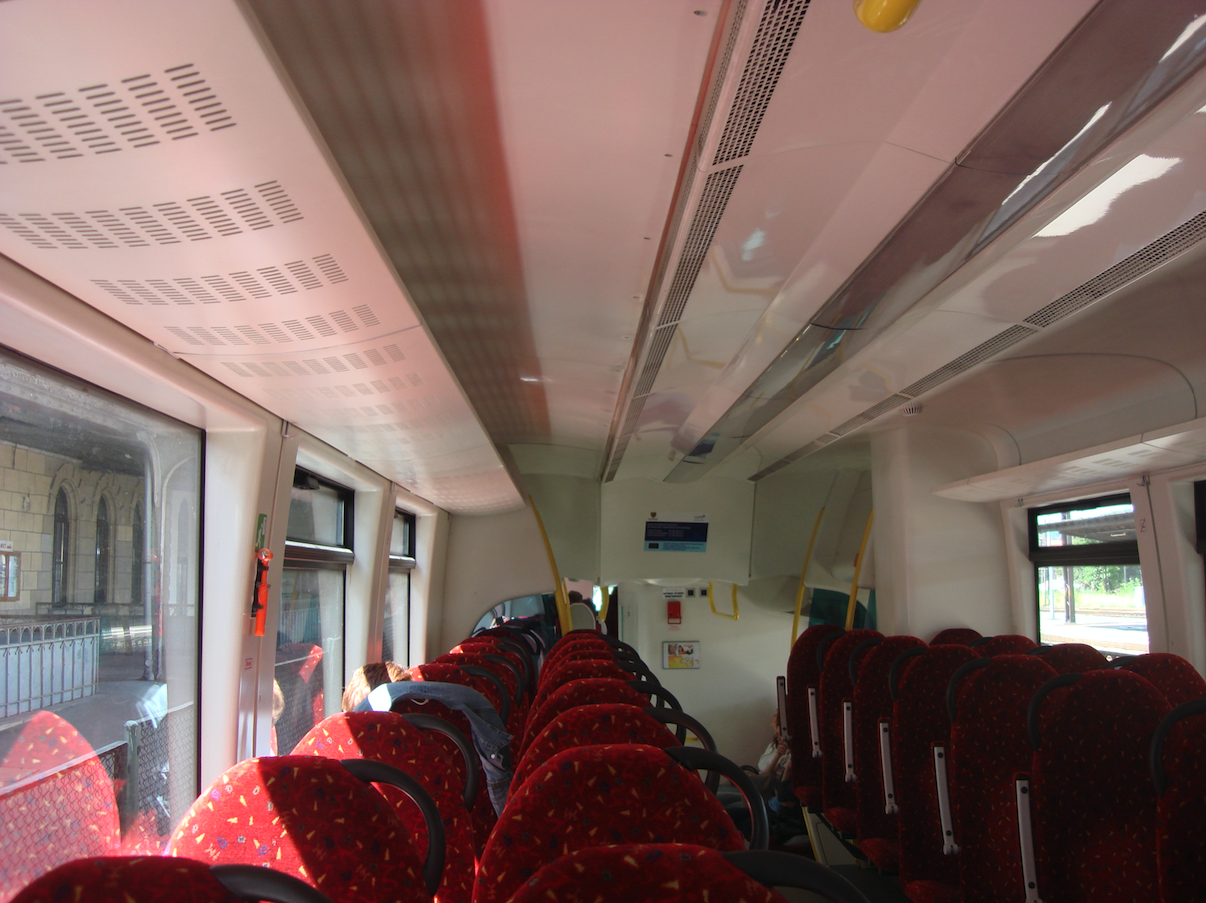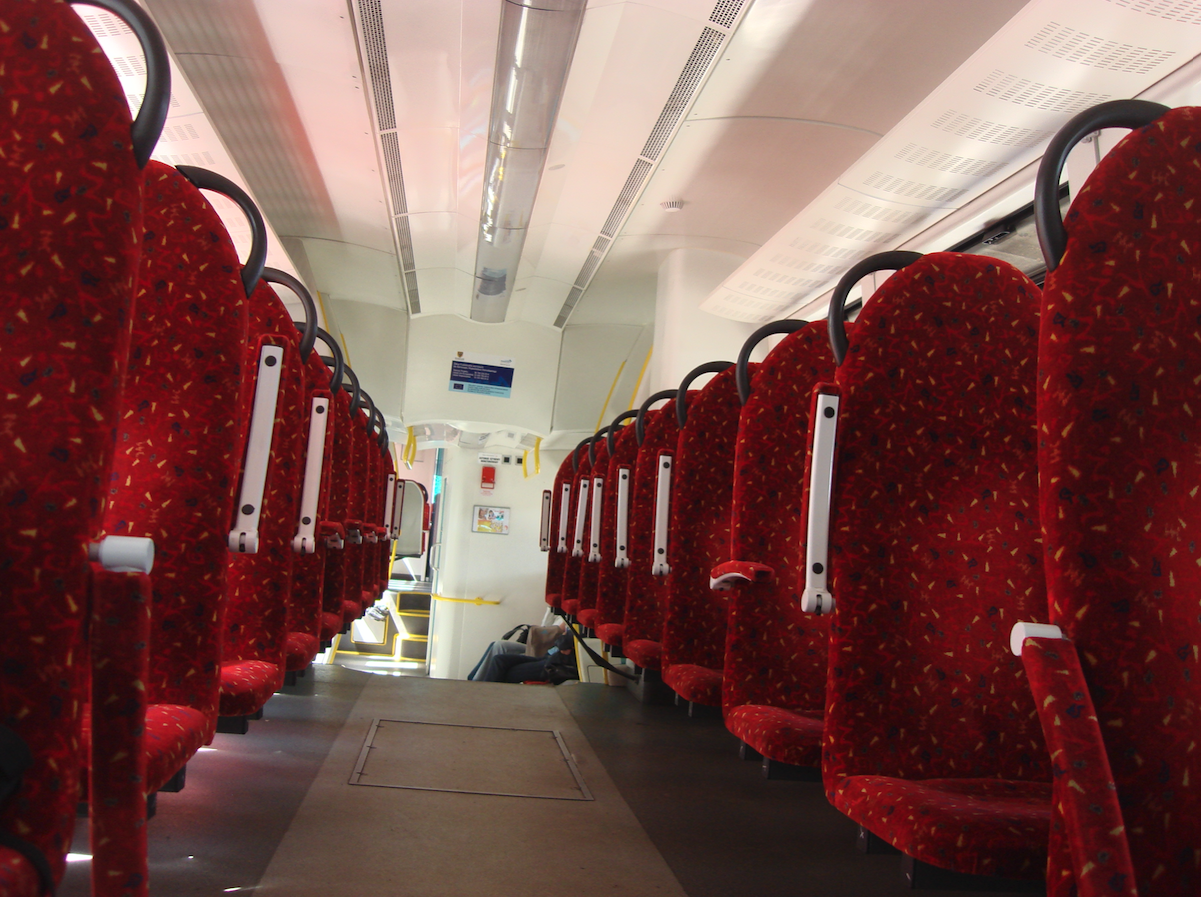Jelenia Góra 2021-11-25
Diesel Multiple Units SA135.
The genesis of the motor car development.





At the beginning of the 21st century, the PESA plant in Bydgoszcz developed a whole family of diesel multiple units to handle routes with less passenger traffic. Some of these vehicles were built as single-wagon, popularly known as rail buses. Others were built as two-carriages, i.e. the already typical Diesel Multiple Units.
Diesel multiple units type 214Mb marked as SA135 have been produced since 2008. The vehicle was developed by PESA in cooperation with the MARAD Design office. The SA135 version evolves from the basic 214M design. The family includes vehicles of the SA106 type (proper type 214M), SA103 (214Ma) and SA134 (214Mb, two-car). Production started in Bydgoszcz. The simpler version of the SA135 was also produced by ZNTK Mińsk Mazowiecki. The changes consisted in simplifications in the design of the driver's cab in order to reduce production costs.
The first SA135 vehicles were ordered by the Lower Silesian Railway. Then the wagons went to the Mazowieckie Voivodeship. There have been concerns that single wheelchair powered vehicles may have difficulty navigating on mountain rough trails, especially in fall and winter. These fears turned out to be unfounded and the wagons are doing very well there. The wagons are characterized by low operating costs and low track requirements. The cost of one SA135 wagon in 2010 was approximately PLN 13.5 million. SA135 vehicles also use PolRegio and Arriva. By 2016, 59 units had been built.
Construction SA135.
The SA135 vehicle is designed for normal 1,435 mm track where there is no electric traction. The wagons are used in suburban and local traffic, with a route length of no more than 100 km. There are driver's cabins at both ends of the vehicle. The endcarriage is equipped with a typical screw coupler and has no automatic coupler. Nevertheless, the vehicle is capable of multiple driving. Above the coupler there are multiple control sockets, which are somewhat hidden. These are electrical sockets and pneumatic installations. SA135 trains can be coupled in multiple traffic not only between themselves, but also with SA134 and SA106 vehicles. Classic bumpers with a deflection of 0.10 m were mounted on the endcarriages.
The support and the frame of the wagon are made of steel profiles joined together by welding. Low-alloy carbon steel with increased corrosion resistance was used. The steel profiles are made of 3 mm thick steel, and the covering is 2 - 1.5 mm thick. The fronts of the wagon are made of polyester-glass laminate. The panes are mounted using the pasting method. The carriages have two doors on each side, and the Koleje Mazowieckie cars have a single door on each side. The entrance is 1.30 m wide, which makes it easier for people with disabilities to enter. For them, there is a folding ramp on which wheelchairs move. The doors are opened and closed automatically by the train mechanic using a pneumatic-electric system. The rebound sliding door is controlled by a photocell.
The interior of the wagon.
The middle part of the wagon has a low floor, i.e. 0.60 m above the rail head. There are places for wheelchair passengers in this part. There is a toilet in a closed system, accessible to the disabled. In this part there are foldable places for passengers and a place for large luggage, bicycles or skis. From the middle part of the car, the stairs lead to two parts where the floor is placed higher. There are three steps to each side. Under the floor of these parts of the car there are trolleys, an internal combustion engine, fuel tanks, compressed air tanks, water and faeces tanks, batteries and others. Inside, for passengers, there are seats made of plastic, covered with soft upholstery. The seats are arranged in a 2 + 2 arrangement with a passage in the middle, just like in a coach. The walls are lined with cream-colored hard plastic. There is a passenger information system in the form of displays and voice announcements in the car.
The train has standard equipment: Chuwak, SHP (automatic train braking), Radio-Stop. In the front cabin there is an electric systems cabinet, and in the rear cabin there is a pneumatics cabinet and driving safety devices. The air-conditioning unit is mounted on the roof of the wagon. The wagon has fire alarm.
Some users have equipped their wagons with a GPS system connected to the carrier's headquarters. Thanks to this, you know where the train is at any given moment. Some users have equipped the windows in their carriages with manually operated roller shutters. Some users have equipped their wagons with exterior cameras instead of rear-view mirrors.
Wagon drive system.
The wagon is based on two two-axle bogies. B'2 'axle system, which means that one bogie is driving and the other is rolling. Each trolley has a double spring. The first stage consists of metal-rubber springs, and the second stage consists of airbags supported by hydraulic shock absorbers. Under the car body there is an internal combustion engine which drives the wheels through a hydraulic transmission, an automatic gearbox, a cardan drive shaft and gears on the wheel axles.
Braking system based on discs mounted on the axle of the wheels. The brakes have an ABS system. Trolleys are equipped with sandboxes. At the customer's request, the wheel flange lubrication system can be installed.
The SA135 rail car was equipped with Power Pack engines. The vehicle is equipped with a 530 HP MTU 6H 1800 R84 diesel engine or a 12.8 liter MTU 6H 1300 R84 engine with 380 HP. The engine is coupled to the ZF 5-HP902 automatic transmission. It is also possible to use other engines of the MTU Power Pack family.
The advantage of the Power Pack engine is its integral structure. The Power Pack includes the engine, clutch, transmission, lubrication system, cooling system, exhaust system, and electronic control and diagnostics. The dimensions of the Power Pack allow them to be mounted under the floor of the car or on the roof of the car when it moves the power generator, i.e. in trains with electric transmissions. The MTU engine is derived from Roll Royce diesel engines.
Data T-T SA135:
Serial production since 2008. Factory type 214Mb, rail type SA135. Related SA133, SA132, SA134, SA106. Length 24.50 m. Width 2.89 m. Height 4.135 m. Weight 44,000 kg. Maximum weight 77,500 kg. Arrangement of trolleys B'2 '. The height of the floor in the low part is 0.60 m from the rail head. The height of the floor in the high part is 1.15 m from the rail head. Number of seats 60. Total number of travelers 150 - 170 people. Top speed 140 km / h. Service (travel) speed 120 km / h. The diameter of the wheels is 0.84 m.
SA135-001.
The SA135-001 vehicle was produced in Bydgoszcz in May 2008. It was bought by the Marshal's Office of the Lower Silesia Province and entered into the register of PKP Przewozy Regionalne. After the establishment of the Koleje Dolnośląskie company, the wagon was entered into the company's status in December 2008. In 2018, the wagon was repaired at P4 level at ASO Mieczkowski Inowrocław.
Written by Karol Placha Hetman
